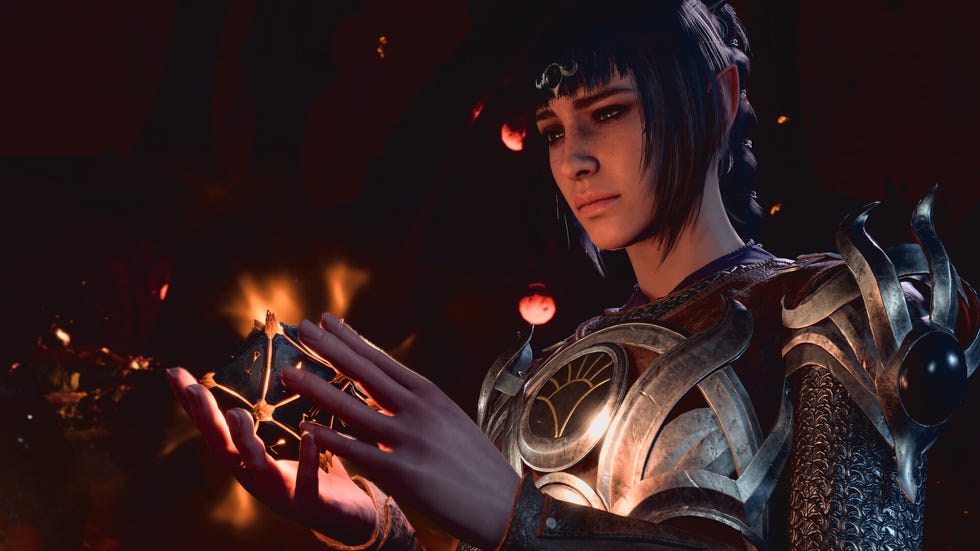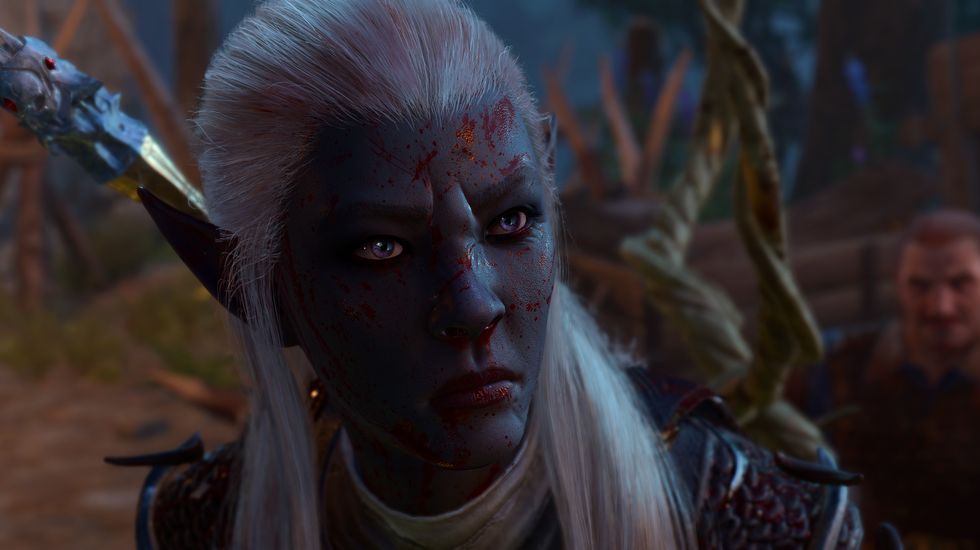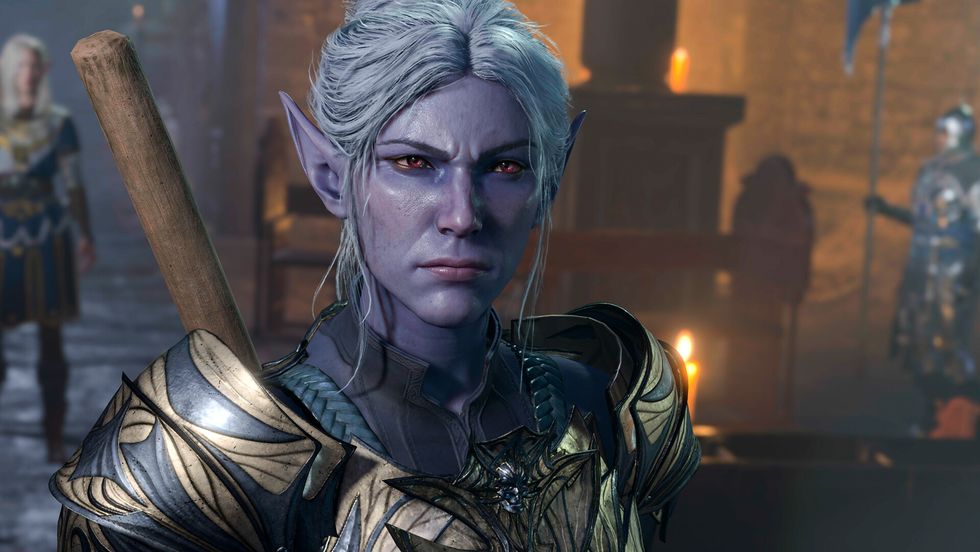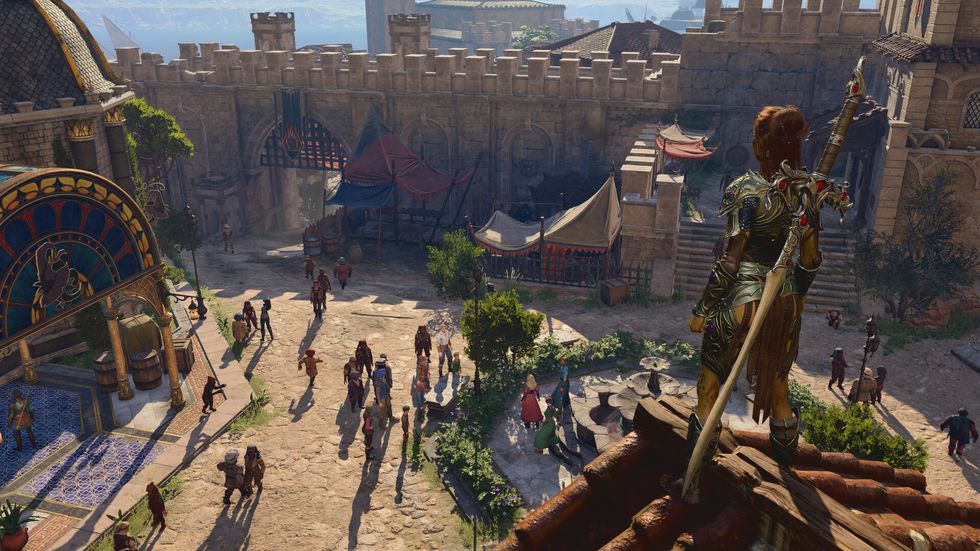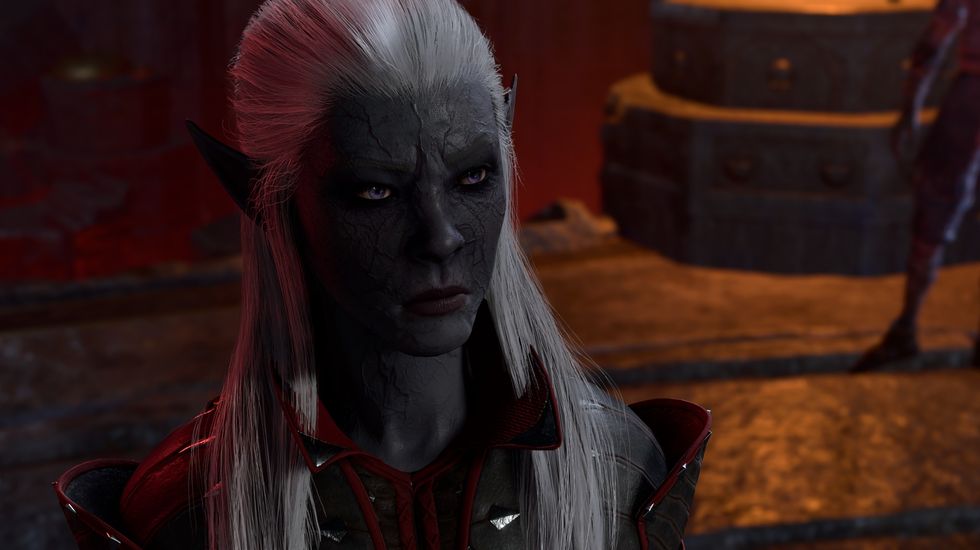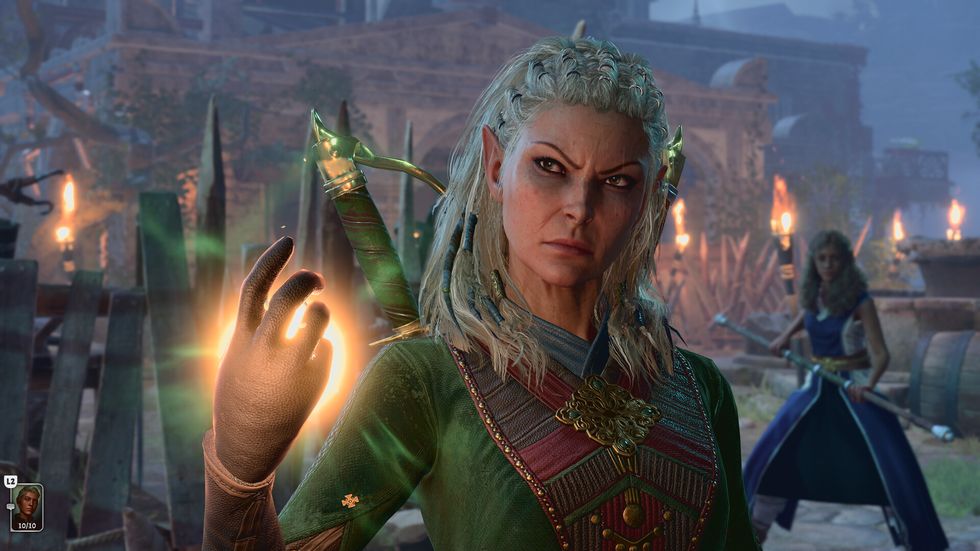Baldur’s Gate 3 spoilers follow.
This is stating the obvious, but Baldur’s Gate 3 is special. Larian Studios is rightly taking the plaudits from both fans and critics, with its Metacritic score of 96 the joint-highest of the year alongside Tears of the Kingdom.
There is so much to love about the Dungeons & Dragons-based game, but it does come with a caveat: the third act is underwhelming due to its inconsistency. That said, the first two acts set an incredible standard and I feel confident in saying that they make up the best role-playing experience I’ve played in years.
Many things stand out, including the well-written companions and the turn-based combat, but one of the most striking, at least with the first two acts, is the way it presents the illusion of choice through the way the quests and storylines work, and using that to create personalised storytelling.
It starts with the character you create. My character was a Seldarine Drow monk plagued with murderous Dark Urge temptations she was trying to resist, and conversations and dialogue options in the game regularly referenced her traits. As an example very early in the game, I passed through a village home to potentially hostile goblins without any confrontation, after they saw that I was a Drow. I did not have to resort to charisma checks or combat.
Dice rolls happened all the time as my Drow’s proficiencies came into play. Her high Insight allowed her to tell when someone was lying, offering an extra option to push the interrogation further. Through her high Perception, she could spot little things in the environment that others would miss, like a trap or a suspicious bookshelf.
On the other hand, a low proficiency in Religion resulted in her failing to understand the relevance of a goddess statue. It was handy that I had Shadowheart, a devout follower of Shar, as one of my companions.
And while the Dark Urge origin may seem ideal for an ‘evil’ playthrough at first glance, I had greater satisfaction in playing someone who was trying not to give into her inner desire to kill, or at least reserve those tendencies for those who arguably deserve it more (shades of Dexter).
The storytelling flourishes further with how the quests intertwine. Quite often in games, quests are self-contained storylines that resolve very neatly, but Baldur’s Gate 3 is a lot more ambitious than that.
Here, characters and plot points in quests regularly overlap, leading to different outcomes having a greater effect than it may first appear. The dynamic nature not only enhances the world-building but also makes the narrative feel unique to yourself, creating an abundance of memorable moments along the way.
Act 1 offers the greatest amount of freedom. You start off infected with a life-threatening parasite and so naturally, your first key objective is to find a cure.
However, there are several different quests relating to different leads on people who may be able to heal you – from rescuing a missing druid, to locating a group of githyanki, to helping a friendly mind flayer – and you don’t have to follow each quest line if you don’t want to.
How you pursue these leads impacts other storylines. The absence of the druid leader has wider implications over the fate of the village of Emerald Grove, for both the other druids and the Tiefling refugees, while Lae’zel, your gith companion who recommends finding the gith creche, can permanently leave your party depending on your actions there.
The strength in the way the threads interact with each other is enhanced by the fact that the vast majority of the quests, even the minor ones, don’t feel like filler or self-contained – whether they relate to your main objectives, involve a personal stake for a companion, open up new areas to explore, leave characters’ fates up in the air to be revisited in a later act, or multiple of the above.
The second act may be less open than the first, but makes up for it by using the narrative structure to sell the setting of the Shadow-Cursed Lands, an eerie and corrupted area shrouded in darkness.
Then Act 3 hits, and it’s a noticeable drop in quality, forgetting at points what made the first two acts so good.
The final third of the game takes place in the titular city of Baldur’s Gate, and it feels a lot more dense – which isn’t a bad thing by itself. But the quests and the individual storylines that litter the place, when combined, make for a less cohesive and more messy time overall (not helped by some bugs and other technical issues).
There are more ‘filler’ quests that don’t add much to the overall experience, for example, whether it’s investigating suspicious toy donations, sabotaging the local newspaper, or finding a random missing person.
They just made the act more cluttered and like busywork, and while I did end up doing the majority of the side quests, I felt like I could have skipped many of them.
It has to be said that there were a couple of standout quests, though. One potential path during the main quests led me to breaking into an underwater prison, which featured a fun battle. But there was also an overlap with another smaller quest, involving a group of Waveservants mourning the death of one of their own. The man they deemed responsible and wanted dead was the same person who granted me access to the prison.
The weight of my decisions here felt more meaningful, and I wished there were more moments like this in Act 3.
For every disappointment, there was a high (I highly recommend visiting the House of Hope), and the inconsistency was a shame.
Adding to that inconsistency during my playthrough was how the companions interacted with my Drow late on.
Amid much inner conflict, my Drow made a huge, intense decision over her Dark Urge destiny towards the end of the game, one that was understandably not popular among her friends. One even left the party and tried to kill her as a result.
Shadowheart, my character’s main love interest, expressed heavy disapproval in the moment – but then back in camp, she acted romantically towards my Drow (and continued to do so until the end) as if nothing had happened. Similarly, another companion, Wyll, was angry and declared that our alliance would be over the moment we took down the main villain. And yet, when that moment happened and we saved the day, his first words were suggesting we go for drinks, as if we were best friends.
Considering how engaging the companions were for most of the game – each with their own personalities and individual stories – these moments had a really unfortunate effect on the immersion of some of the big scenes. For a game priding itself in choice and personalised storytelling, cracks began to show by the end.
However, when I look back at my 100 hours spent with the game (including an initial playthrough that I chose to abandon 20 hours in), the parts that made Baldur’s Gate 3 shine easily overshadowed the weaker parts of Act 3.
The first 60-70 hours were near-faultless, with Larian Studios providing an experience unmatched in the role-playing space.
I could continue to nitpick over how I wished that ambition and quality could sustain right until the end credits, but then I think about the whole journey I went through with my Drow and I can’t help but smile.
Despite its late-game flaws, Baldur’s Gate 3 is truly special.
Platform reviewed on: PC
Baldur’s Gate 3 is out now on PC and on September 6 on Mac and PlayStation 5. An Xbox Series X/S release is expected later this year.


